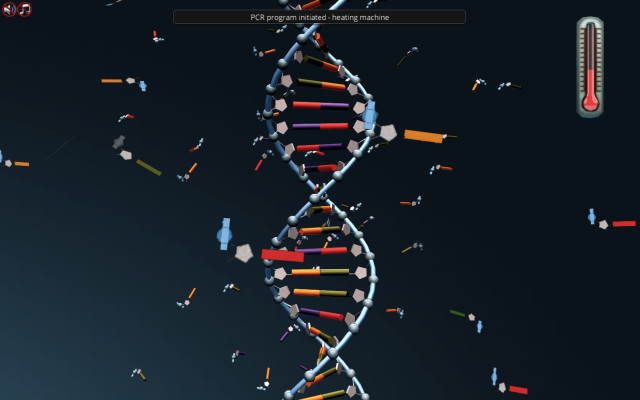
Medical genetics is a transformative field that uses the principles of Mendelian genetics to diagnose and manage hereditary diseases. Its applications are diverse, ranging from the diagnosis of hereditary breast cancer to facilitating the management of sickle cell anemia.
Besides a thorough knowledge of the underlying Mendelian genetics, medical geneticists need to train for many sophisticated experimental techniques. These include techniques like polymerase chain reaction (PCR), polyacrylamide gel electrophoresis (PAGE), DNA sequencing and so on.
Thus, teaching medical genetics is not only about biology, but also the advanced technologies that help us decipher the complex biological principles at work. Here, we list five ways to teach medical genetics that will make it easier to understand for your students.
When teaching a vast and complicated topic like genetics, interactive models help the students visualize the content at close quarters. These models take the students to subcellular and molecular levels to help them see abstract principles weaving their biological magic.
For example, in Labster’s medical genetics simulation, students perform the following genetic analyses in an interactive virtual lab:
· Pedigree analysis
· Linkage analysis
· Protein truncation test
· DNA sequencing

Games and activities have the power to become an educator’s most trusted teaching assistants. Encourage your students to participate in class-level games and activities so they can approach the topic from a different perspective. This new perspective can make the topic more exciting for the students, which in turn will help them understand better.
Here is an example. You can engage your students in medical case studies where they must diagnose a patient based on their medical history. The process will involve the use of pedigree analysis, and there will be many red herrings on the way! The students will learn a lot about medical genetics as they play the detective in this fun and intellectually-stimulating activity.
Technology can make an educator’s task a lot simpler and more fruitful, so long as the educator chooses wisely. From animation and simulation to virtual reality and augmented reality, pick out the best-suited technology for your teaching material. Augment your medical genetics lesson with the technology of your choice and make it exciting for your students.
Take Labster’s medical genetics simulation, for example. Our simulation presents a detailed animation to explain every single aspect of the genetic transfer of diseases. Stimulating visuals take the students through the process of cancer progression and metastasis. The students also learn creatively about BRCA1 and BRCA2, both of which are important breast cancer-related genes.

Everything we teach and learn has the potential to transform into a viable career. But students tend to be unaware of the professional prospects that come with learning complex subject matter. Creating awareness about these career prospects can make the subject interesting for all students.
Talk to your students about the important role that medical geneticists play in the field of clinical medicine. Discuss the rising significance of genetic counselors, who help families at risk of hereditary disorders. Invite some of these professionals to address your students and share personal experiences from their careers.
So many non-communicable diseases have a genetic component that finding real-world applications of medical genetics is not difficult. It is important to tell your students about these real-world applications to make the topic intriguing and attention-worthy for them.
There are many ways to do this. Talk to your students about the importance of medical genetics in cancer diagnosis. Communicate to them the statistics of hereditary breast cancer. Tell them how those who have inherited a cancer-specific gene could sometimes have over 80% probability of a cancer diagnosis. These hard-hitting real-world statistics will help your students realize how medical genetics can be incredibly helpful in managing some of the deadliest hereditary diseases.
The science and technology that make medical genetics possible are so widely applicable to other fields of medicine that all biomedical aspirants should know them. The creative teaching methods we have discussed here can make medical genetics a stimulating study topic and keep students informed.
Try our free 30-day All Access Educator's Pass today and teach with the Medical Genetics simulation alongside 300+ other virtual labs!

Labster helps universities and high schools enhance student success in STEM.
Request DemoRequest a demo to discover how Labster helps high schools and universities enhance student success.
Request Demo